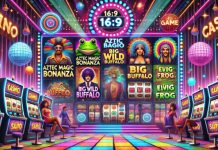First introduced in the 1970s, video gaming has come a long way since its relatively humble beginnings. Of all those improvements, graphical technology remains one of the most key. The evolution of game graphics is a journey from pixelated sprites that personified the 8-bit era to photorealistic worlds today, and it has been mainly along kinetic power via giant computing but also artistic innovation. This adventure has transformed gamers’ outlook on reviews and contributed immensely to reshaping the future of an ever-expanding live casino world.
The Early Years and Pixel Graphics
The early video games, “Space Invaders,” “Pac-Man,” Donkey Kong,” and Galaga had low-resolution graphics. With the simple pixelated sprites and limited color palettes, it worked to a unique visual style that still looks great today. In “Space Invaders,” these visual items were not objects or characters.
Although games back then weren’t visual masterpieces, they still showed the developer’s imagination and set down exactly what would continue the headed game design. Iconic characters, easily accessible gameplay mechanics, and integration of visual elements for storytelling “Super Mario Bros.” expanded upon this foundation with blocky level design — a standard for the platformer genre. However, those technical limitations forced the developers to be creative, and as a result, we got distinctive graphics that could still be used for current popular games.
As the early games revolutionized what was possible, so are live casinos today pushing entertainment to its limits. Feel the excitement of the Melbet live casino, now from home. You’ll feel right there in the action with a wide variety of games, stunning graphics, and a live dealer experience.
The Transition to 3D Graphics
It was the 1990s, a perfect moment for the birth of 3D graphics. That established the default image we have for what video games are. The fact is that the mainstreaming of 3D technology, or a particular vision of it, is defined by “Super Mario 64”, “Tomb Raider,” “Quake,” “Half-Life,” and “Unreal Tournament.” “Super Mario 64” redefined the fifth dimension of platforming, while “Tomb Raider” provided a more organic route to adventure. The formative FPS would forever be altered when games like “Quake,” “Half-Life,” and, to a lesser extent, changed the allure of twitch shooting with smoother combat engagements.
They were a hallmark for the next leap in realistic and immersive video games. Adding polygonal modeling, textures, and lighting to their environments and characters started creeping in. Not only did this move to 3D graphics make games look a lot more impressive, but it also ushered in the possibility of presenting proper 3D gameplay.
Modern Graphics Technologies
Today, video game graphics are more realistic and of higher quality than ever. These days, you can’t say that insane visual processing like ray tracing, HDR, or photogrammetry don’t have a hand in titles such as “The Last of Us Part II,” “Red Dead Redemption 2,” “Cyberpunk 2077,” “Horizon Zero Dawn,” and “God of War” and soon-to-be-released games.
Meanwhile, ray tracing is a rendering technique that simulates how light interacts with objects to create realistic lighting, reflections, and shadows. HDR is short for High Dynamic Range, which means more colors and a higher contrast level.
The Application of Graphics Technologies in Live Casinos
The evolution of video game graphics has profoundly affected the online casino sector. Live casinos, designed to mimic the ambiance of traditional casinos, have adopted these advancements to improve the player experience.
- Interactive Environments: Technology within 3D can easily simulate realistic environments, which include casinos and casino floors. Your location is competent to feel present and playing, for instance, there. In addition, you will be able to create groups with additional players to sit at remote destinations.
- Improved Gameplay: As far as live casino games of roulette, blackjack, and baccarat go, 3D animations with effects add excitement to the gameplay, making them look more realistic. Ranging from simple card flips and the ball spins beneath to truly fancy visual fireworks upon winning moments.
- High-Quality HD Streaming: Live casino games are broadcast in high definition, and live dealer casinos use advanced technologies such as HDR (high dynamic range) to produce more realistic images. It allows players to see every part of the game, from how a dealer smiles or moves right down to what is so special about some Roulette wheels than others.
- Interactive Components: The presence of more interactive elements, such as chat rooms and virtual avatars in live casinos, is expected to enhance the social component of gaming. It is more interactive, and social individuals can also talk to each other and the dealer.
- Mobile Play: The best part of live casino games is that they are at the push of a button, ensuring players receive the same gaming experience on their smartphones and tablets. It has expanded the reach of live casinos, making them accessible to more people.
Slot machines, a cornerstone of online casinos, have transformed into breathtaking 3D animations and effects, adding a layer of thrill to the game. The aim is to give players a sense of presence and engagement that rivals a mortar and brick casino.
The Future of Immersion
Years and years of video game graphics development give these discoveries that can break the barriers to creating further immersion in digital worlds. This evolution made gaming unrecognizable when released and eventually found its way into live casinos. The environments will be more realistic, with better gameplay and live online features that take us one step closer to a super casino. One is a frictionless experience for players, including cutting-edge tech, and stunning graphics that make every game immersive and exciting.




